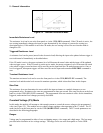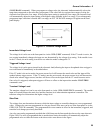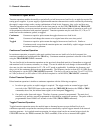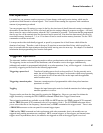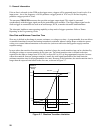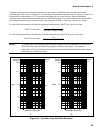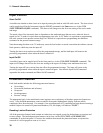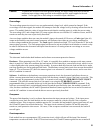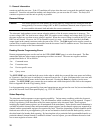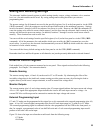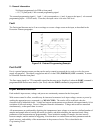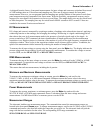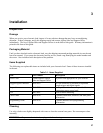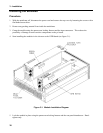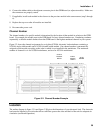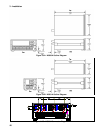
2 - General Information
32
remain set until they are reset. If the OT condition still exists when the reset is executed, the module's input will
remain off. You must wait until the module cools down before you can reset the OT circuit. The fan(s) will
continue to operate to cool the unit as quickly as possible.
Reverse Voltage
Caution This feature protects the load module in case the input dc voltage lines are connected with the
wrong polarity. If a reverse voltage (LRV or RRV) condition is detected, turn off power to the
dc source and the electronic load and make the correct connections.
The electronic load conducts reverse current when the polarity of the dc source connection is incorrect. The
reverse voltage (LRV for local reverse voltage; RRV for remote reverse voltage) and voltage fault (VF) bits in
the status register are set when reverse voltage is applied. When the reverse voltage is removed the LRV and
RRV bits are cleared. However, the VF bit remains set until it is reset. As previously described, the Fault
output signal at the control connector tracks the state of the VF bit. The Fault signal can be used to control an
external relay in order to disconnect the module from the dc source if an RV condition occurs. This feature also
detects reverse voltage at the Sense terminals.
Reading Remote Programming Errors
Remote programming errors can be read via the GPIB (SYST:ERR? query) or at the front panel. The Err
annunciator indicates when remote programming errors have occurred. The errors are negative numbers
grouped into blocks of 100 as follows:
-lxx Command errors
-2xx Execution errors
-3xx Device-specific errors
-4xx Query errors
The SYST:ERR? query reads back the errors in the order in which they occurred (the error queue can hold up
to 30 entries). Once the error is read back it is removed from the list. A value 0 indicates there is no error; and
0 will be returned when all errors in the list have been read. Pressing the
Error key displays just the error
number. The SYST:ERR? query returns the error number and a short description of the error to the computer.
Refer to Appendix B in the Programming Guide.
Local programming errors generated by front panel operations are not put into the error list, but are immediately
put on the electronic load's front panel display; e.g., 'OUT OF RANGE'.
Status Reporting
The electronic load incorporates a status reporting capability. Various status conditions within the electronic
load can be reported using this capability. The user determines which condition(s) will be reported. Chapter 5
of the Programming Guide describes each of the status registers in the electronic load. (These registers,
including the channel status registers, are all maintained in the mainframe.) Notice that the same information is
available in both the channel status and questionable status registers, but the channel registers are organized by
channel, and the questionable registers are organized by fault. Therefore, depending on which channels and/or
faults are most critical in your application, you can use one branch to localize selected faults quickly, and use
the other branch for broader fault reporting. By knowing that only a particular fault (questionable branch) or a
particular channel (channel branch) is enabled to initiate a service request, you can eliminate the need to read
one or more registers to locate a fault.



